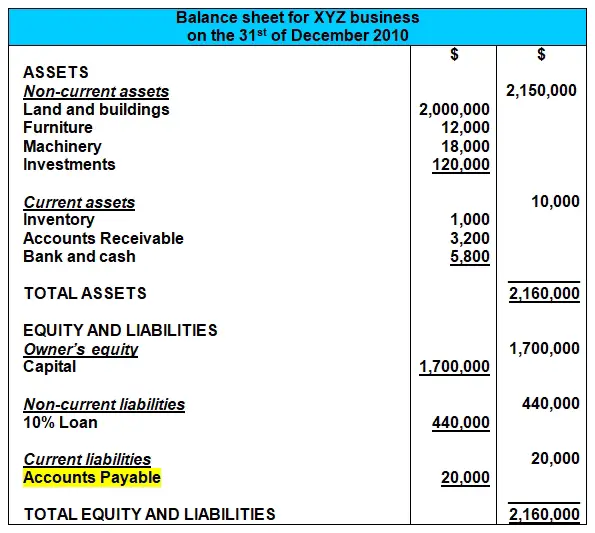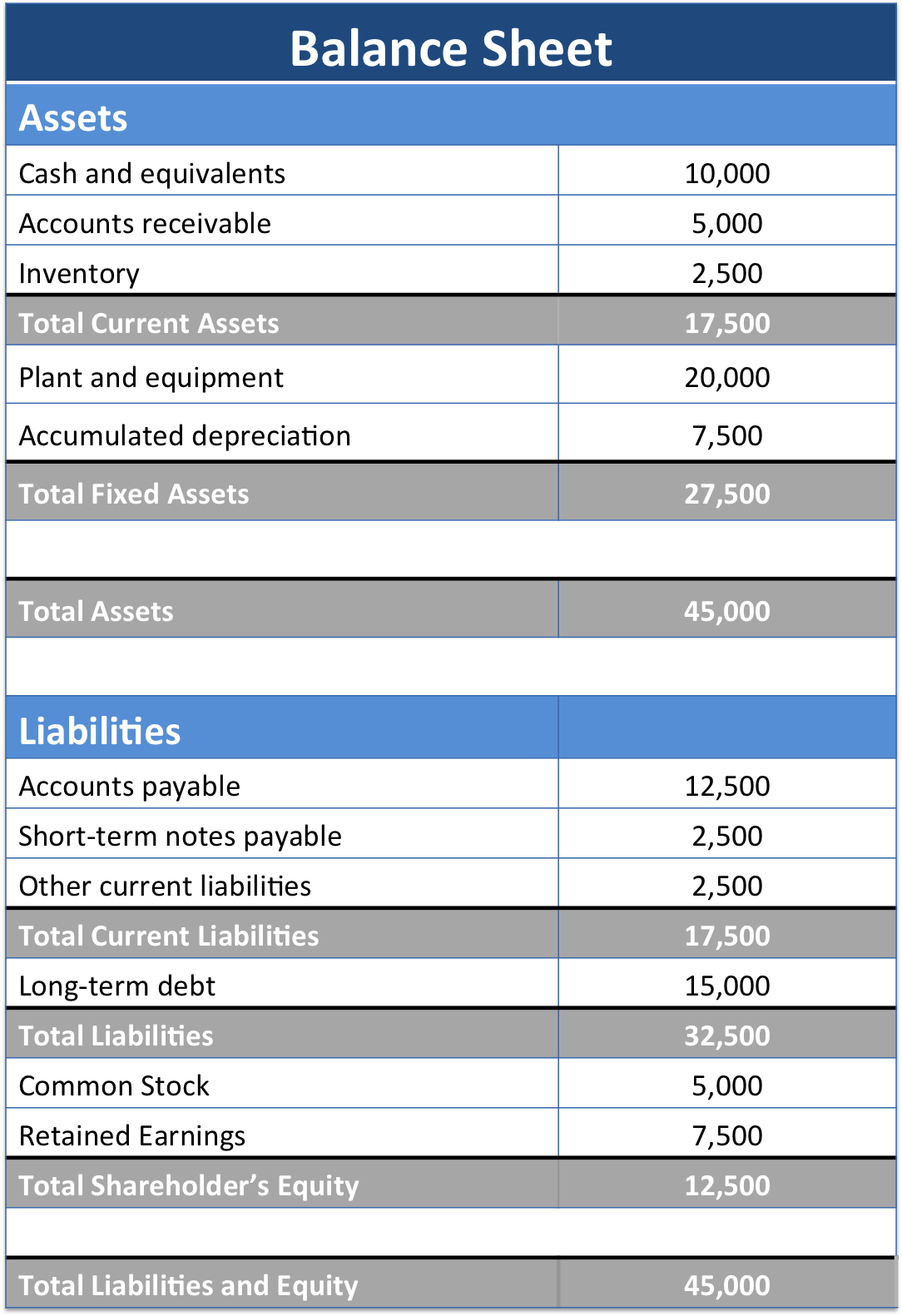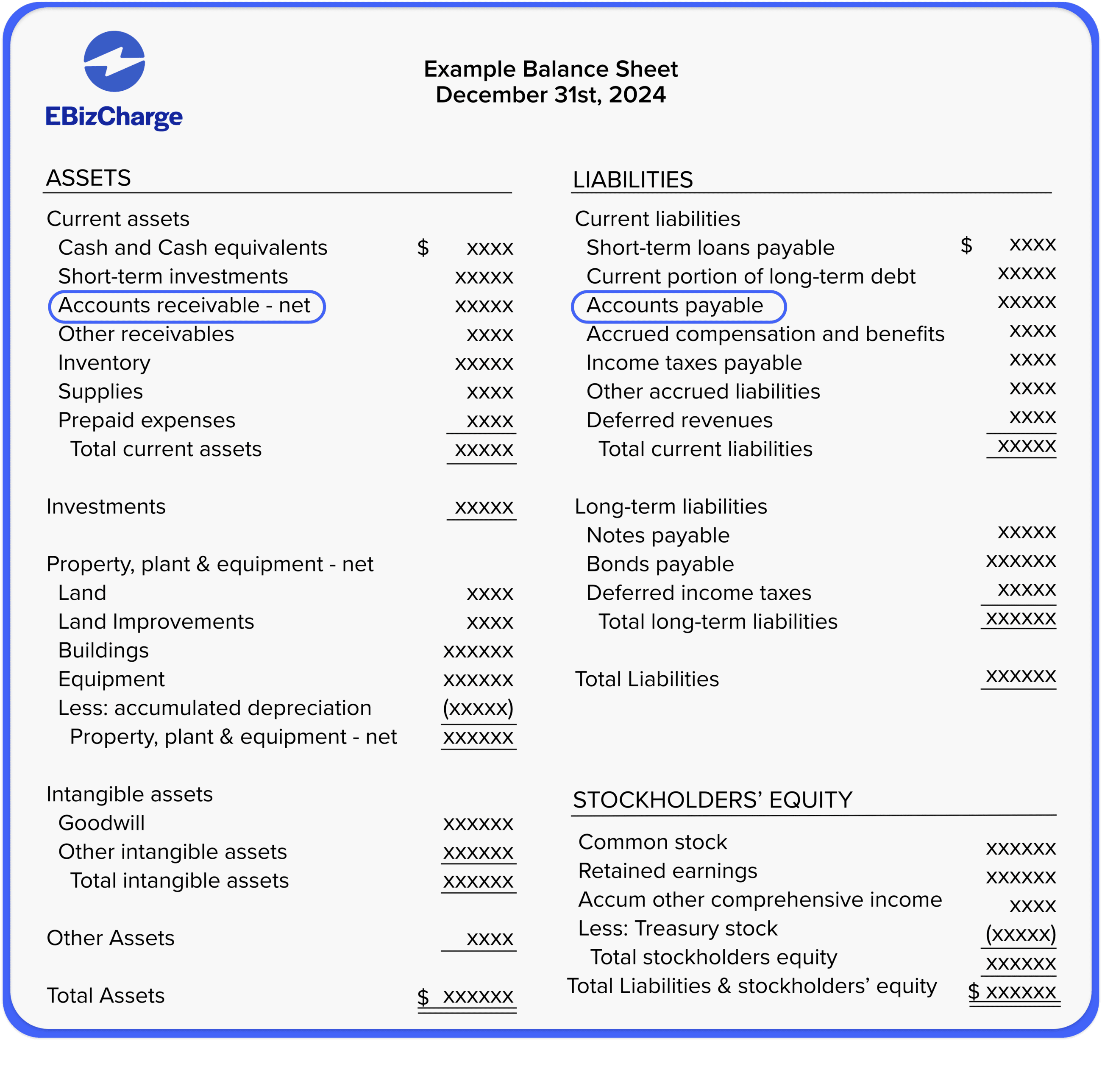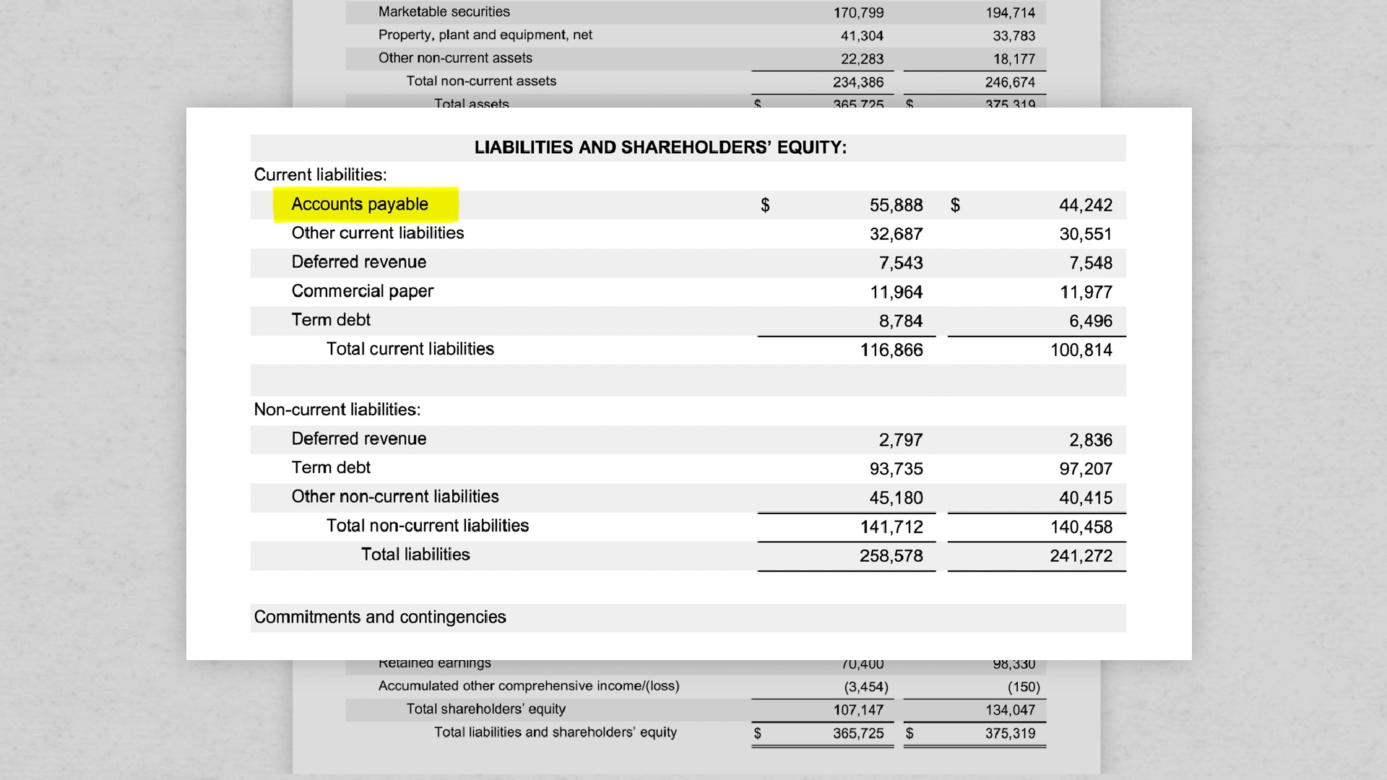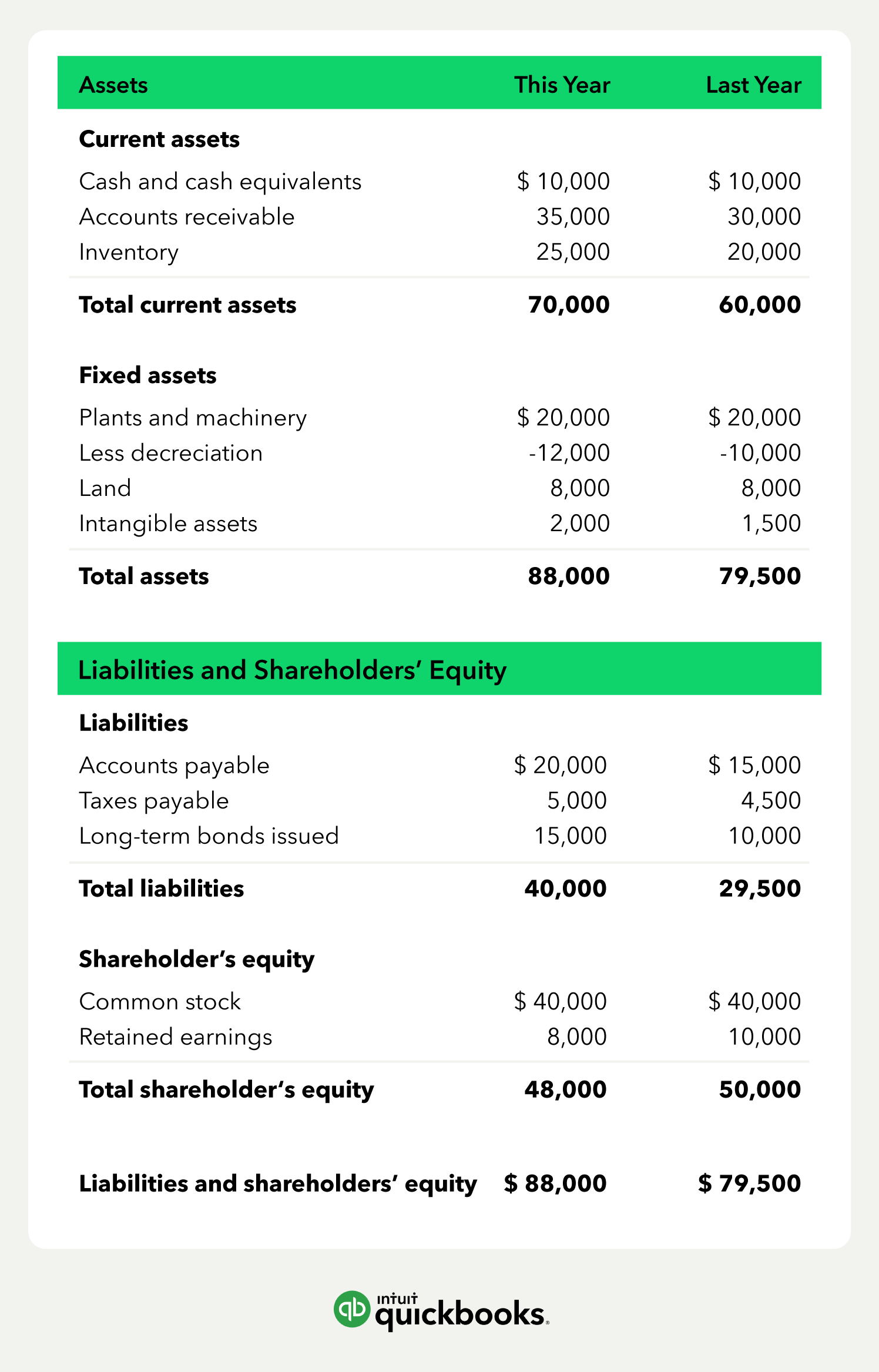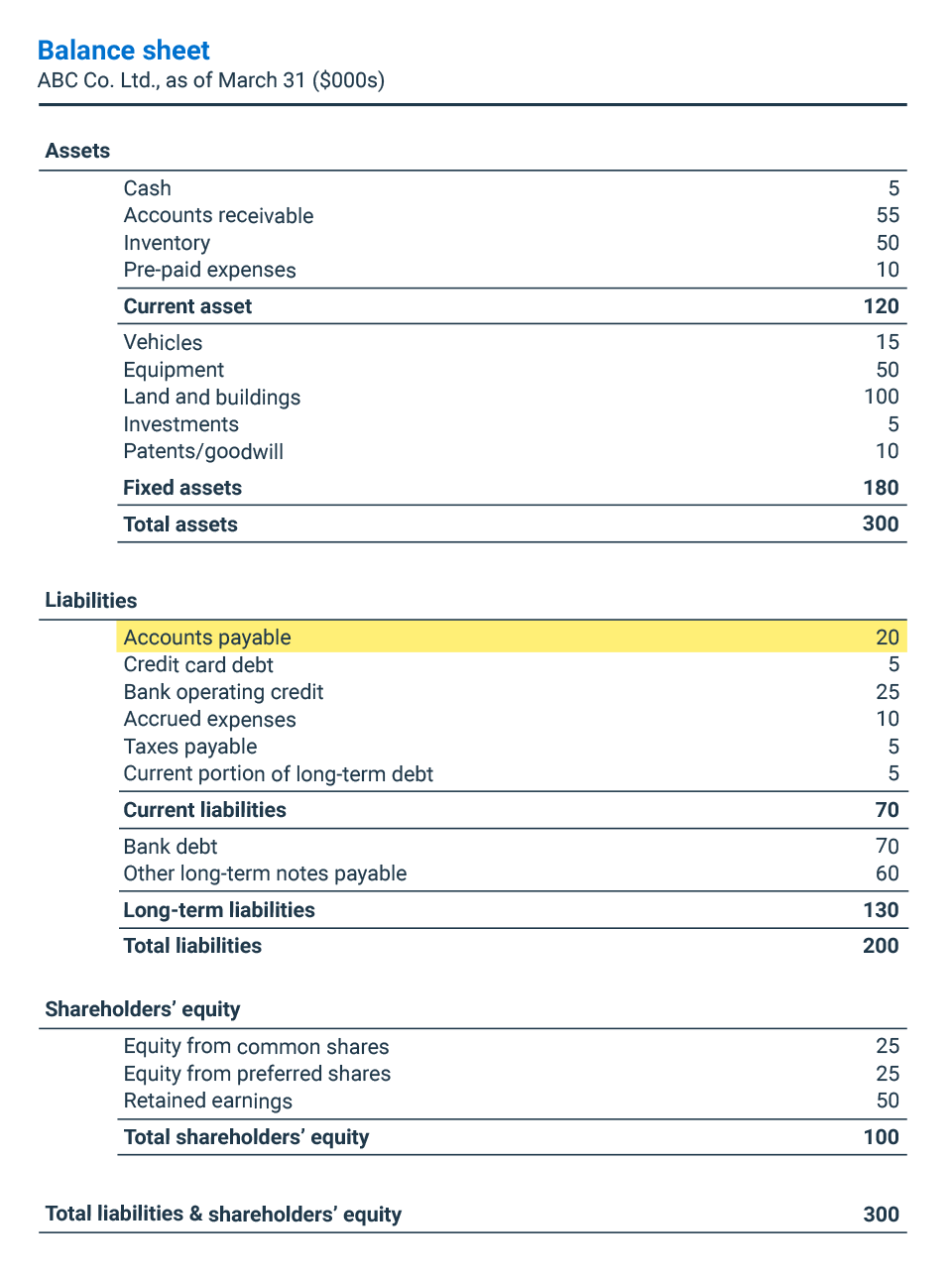What Is Accounts Payable On A Balance Sheet
What Is Accounts Payable On A Balance Sheet - Accounts payableis a current liability recognized on the balance sheet to measure the unpaid bills owed to suppliers and. When a company purchases goods and services from a supplier or creditor on credit that needs to be paid back quickly. Accounts payable are the amounts owed by a business to its vendors or creditors for goods or services purchased on credit. Accounts payable affects both the balance sheet, as a current liability, and the income statement, through the matching.
Accounts payable affects both the balance sheet, as a current liability, and the income statement, through the matching. When a company purchases goods and services from a supplier or creditor on credit that needs to be paid back quickly. Accounts payable are the amounts owed by a business to its vendors or creditors for goods or services purchased on credit. Accounts payableis a current liability recognized on the balance sheet to measure the unpaid bills owed to suppliers and.
Accounts payable affects both the balance sheet, as a current liability, and the income statement, through the matching. Accounts payable are the amounts owed by a business to its vendors or creditors for goods or services purchased on credit. Accounts payableis a current liability recognized on the balance sheet to measure the unpaid bills owed to suppliers and. When a company purchases goods and services from a supplier or creditor on credit that needs to be paid back quickly.
What is accounts payable? Definition and examples
When a company purchases goods and services from a supplier or creditor on credit that needs to be paid back quickly. Accounts payable are the amounts owed by a business to its vendors or creditors for goods or services purchased on credit. Accounts payable affects both the balance sheet, as a current liability, and the income statement, through the matching..
Accounts Receivable vs Accounts Payable
Accounts payable are the amounts owed by a business to its vendors or creditors for goods or services purchased on credit. Accounts payable affects both the balance sheet, as a current liability, and the income statement, through the matching. When a company purchases goods and services from a supplier or creditor on credit that needs to be paid back quickly..
How Do You Calculate Accounts Payable On A Balance Sheet at Sara Gosman
Accounts payable are the amounts owed by a business to its vendors or creditors for goods or services purchased on credit. Accounts payable affects both the balance sheet, as a current liability, and the income statement, through the matching. When a company purchases goods and services from a supplier or creditor on credit that needs to be paid back quickly..
Balance sheet example track assets and liabilities
When a company purchases goods and services from a supplier or creditor on credit that needs to be paid back quickly. Accounts payableis a current liability recognized on the balance sheet to measure the unpaid bills owed to suppliers and. Accounts payable affects both the balance sheet, as a current liability, and the income statement, through the matching. Accounts payable.
What are Accounts Receivable and Accounts Payable?
When a company purchases goods and services from a supplier or creditor on credit that needs to be paid back quickly. Accounts payable affects both the balance sheet, as a current liability, and the income statement, through the matching. Accounts payableis a current liability recognized on the balance sheet to measure the unpaid bills owed to suppliers and. Accounts payable.
Accounts Payable (AP) What They Are and How to Interpret Pareto Labs
Accounts payable are the amounts owed by a business to its vendors or creditors for goods or services purchased on credit. Accounts payableis a current liability recognized on the balance sheet to measure the unpaid bills owed to suppliers and. Accounts payable affects both the balance sheet, as a current liability, and the income statement, through the matching. When a.
What is accounts receivable? Definition and examples
Accounts payableis a current liability recognized on the balance sheet to measure the unpaid bills owed to suppliers and. Accounts payable affects both the balance sheet, as a current liability, and the income statement, through the matching. Accounts payable are the amounts owed by a business to its vendors or creditors for goods or services purchased on credit. When a.
How to Read & Prepare a Balance Sheet QuickBooks
Accounts payable affects both the balance sheet, as a current liability, and the income statement, through the matching. When a company purchases goods and services from a supplier or creditor on credit that needs to be paid back quickly. Accounts payable are the amounts owed by a business to its vendors or creditors for goods or services purchased on credit..
What are accounts payable? BDC.ca
Accounts payable are the amounts owed by a business to its vendors or creditors for goods or services purchased on credit. When a company purchases goods and services from a supplier or creditor on credit that needs to be paid back quickly. Accounts payableis a current liability recognized on the balance sheet to measure the unpaid bills owed to suppliers.
Bills Payable in Balance Sheet Double Entry Bookkeeping
When a company purchases goods and services from a supplier or creditor on credit that needs to be paid back quickly. Accounts payableis a current liability recognized on the balance sheet to measure the unpaid bills owed to suppliers and. Accounts payable affects both the balance sheet, as a current liability, and the income statement, through the matching. Accounts payable.
Accounts Payableis A Current Liability Recognized On The Balance Sheet To Measure The Unpaid Bills Owed To Suppliers And.
When a company purchases goods and services from a supplier or creditor on credit that needs to be paid back quickly. Accounts payable are the amounts owed by a business to its vendors or creditors for goods or services purchased on credit. Accounts payable affects both the balance sheet, as a current liability, and the income statement, through the matching.

